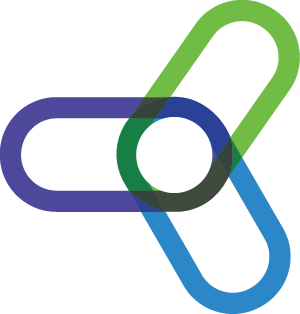
The Learning Management System Features That Actually Move the Needle
You already know how important effective workplace training is. Whether you’re onboarding new hires, managing compliance training, or ensuring your team has the skills to do great work, your learning and development program has a major impact on employee and business success. In today’s tech-forward landscape, what’s changing is how teams get trained.
These days, a learning management system (LMS), also known as an enterprise learning platform, isn’t just a nice-to-have; it’s central to keeping people informed, aligned, and growing. When you dive into the data, this is clear.
Skills are evolving quickly (about 25% of the skills required for jobs across industries have changed since 2015), and nearly 90% of learning and development leaders agree that building employee skills now is the best way to prepare for what’s next, according to a workplace learning report from LinkedIn.
An effective LMS supports that kind of growth for employees and leaders. It brings structure to onboarding, simplifies compliance, and makes training accessible, whether someone’s on a shop floor, behind a desk, or working remotely.
With talent shortages growing, the stakes are real. Over 65% of respondents to the National Association of Manufacturers’ (NAM) 2024 Q1 outlook survey listed attracting and retaining talent as their top challenge. Deloitte found in a 2023 workforce strategies study that 1.9 million manufacturing jobs (over 50% of total positions in that industry) remain unfilled due to skills gaps.
One way to address skill gaps and boost talent within the workplace is with a modern LMS solution. Here’s how to evaluate what’s available (and what to avoid).
What Should You Look For in a Modern LMS?
There are a lot of platforms out there, and not all of them are built with your day-to-day in mind. If you’re looking for a system that truly supports your team and your goals, here are some non-negotiables:
-
Cross-device compatibility
When employees can complete training from a browser on their phones on breaks, between tasks, or on the go, it removes barriers and makes learning feel natural.
-
Automated assignments and reminders
Admins shouldn’t have to chase people down or manually assign every course. Automation saves time, reduces errors, and keeps training moving without micromanagement.
-
Clear tracking and reporting
A 2025 LinkedIn report found that 49% of companies with successful learning programs use data to identify skill gaps. With real-time visibility, admins can proactively spot gaps, prove compliance, and support teams without digging through spreadsheets.
-
No-code course authoring
HR and training teams can build and update content independently, without waiting on developers. That means faster launches, quicker updates, and more control.
LMS Evaluation Guide At a Glance
| What to Look For | What to Avoid |
|---|---|
| Centralized content management for storing and assigning courses | Disconnected system that doesn’t fit into your organization’s workflows |
| User and role-based access controls for different types of learners | One-size-fits-all content delivery with no customization |
| User-friendly course completion tracking and audit logs to support compliance | Minimal or non-actionable analytics that makes it difficult to prove compliance |
| Intuitive interface with minimal learning curve. | Outdated interface with overly complicated setup requiring extensive training |
| Cross-device compatibility that allows for on-the-go learning | Lack of course accessibility from mobile browsers |
| Transparent pricing with clear terms for scaling and upgrades | Surprise fees for implementation, user caps, or feature access |
| Scalable as your team grows or shifts | Rigid workflows that don’t adapt to your organizations structure |
What Sets a Learning Management System Apart
Some platforms may check all of these boxes but still fall flat when it comes to actual engagement or ease of use. These features tend to drive greater training ROI:
-
Personalized learning paths
When the system adapts to the learner based on their role, skill level, or progress, it creates a more relevant experience and better supports growth.
-
Adaptable to different work environments
Not everyone learns at a desk. Whether someone’s remote, in-office, or working hands-on, training that fits into their real workflow means higher adoption and fewer disruptions to daily work.
-
Scalability
As your team grows or shifts, you shouldn’t need to overhaul your training setup. A scalable LMS keeps things running smoothly whether you support ten employees or ten thousand.
Ultimately, the best enterprise learning platforms are the ones that fit you, not the other way around.
What Should You Avoid in a Learning Platform?
You know what works for your business, but here are a few LMS red flags that could cause problems:
-
Overly complicated system
If you have to read a thick manual to learn how to assign a course, it’s probably not worth your time.
-
Rigid structure
You should be able to tweak your learning paths and content delivery as your needs evolve. If an LMS doesn’t allow for this, it will likely hold you back in the long term.
-
Shallow reporting
Without meaningful insights, it’s hard to close training gaps, prove compliance, or improve your program over time.
-
Surprise costs
Implementation fees, user caps, or upgrade charges can add up quickly. Ask questions about additional costs upfront, so you don’t end up with a system that’s too expensive to scale or too limited to meet your needs over time.
Looking for the Best LMS? Check Out Propelr
While you’re exploring options, check out Propelr’s learning platform.
Here’s our approach:
We built our platform with the goal of making workforce training faster, smarter, and more effective.
-
Custom or off-the-shelf content
Build custom, tailored learning programs, plug in content you already have, or buy pre-built courses.
-
No hidden costs
What you see is what you get. We won’t surprise you with unexpected fees.
-
Human-centered
Our highest priority is providing top-shelf customer support. When you work with Propelr, you aren’t just a customer; you’re a valued partner.
-
AI-supported
Our software helps you create relevant training faster with built-in tools that streamline content building for safety, equipment, and compliance topics.
Propelr is flexible enough for whatever training challenge you’re tackling: onboarding, compliance training, skill-building, customer education, or all of the above. Contact our team to get a live Propelr LMS demo.
The Long-Term Impact of Your LMS Choice
The LMS you choose has long-term implications for how your organization attracts, develops, and retains talent. In an L&D report that addresses how companies thrive amid economic headwinds, LinkedIn found that 29% of employees on average say that opportunities to learn and develop new skills are a top reason they’d consider accepting a new job. And 98% of companies that adopted a skills-based learning approach said they retained top performers, according to a Deloitte report evaluating workforce issues around skill gaps and applicant gaps.
Impacts on recruitment and retention directly impact the bottom line. In a 2025 report, SHRM found that hiring a new employee costs about $4,700. In comparison, most companies invest around $3,000 per person in learning and development. Upskilling doesn’t just build stronger teams; it saves money, improves operations, and future-proofs your workforce. The right LMS is how you get there.
Plot Your Path Forward
At Propelr, we have a learning platform designed to help you train smarter and grow stronger across every role, shift, and location. We’ll help you automate busywork so you can focus on growing your team and your business. Check out the ins and outs of our platform.
